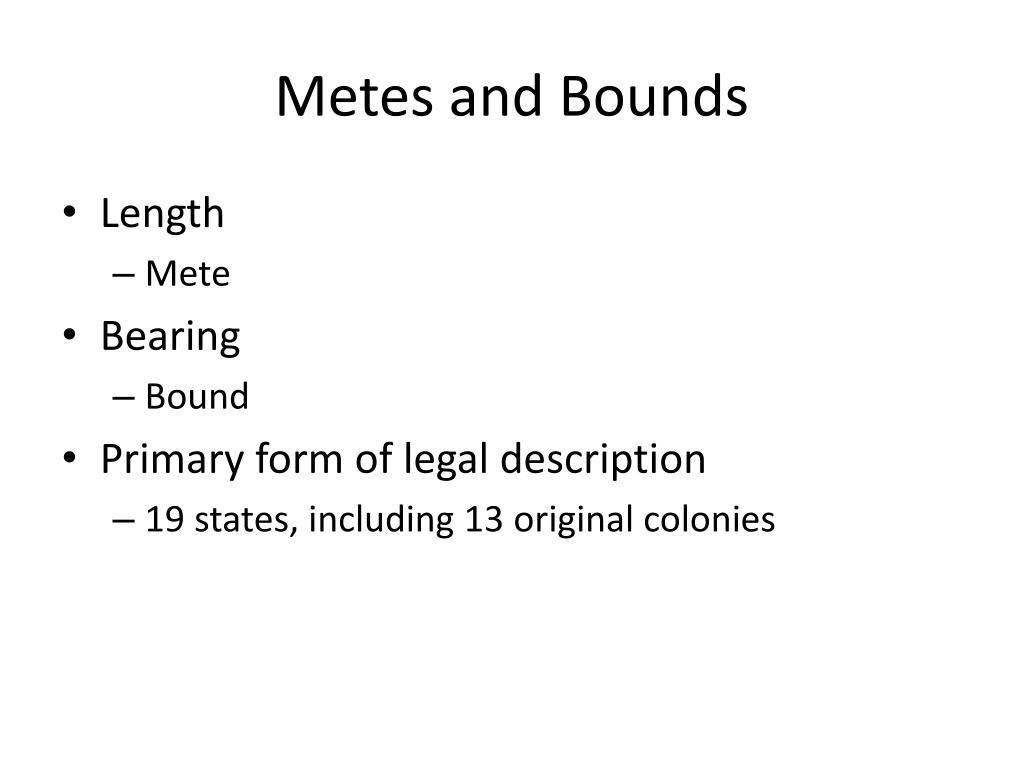
Boundaries and boundaries of a strip of land, as they are characterized by natural attractions such as rivers or by man-made structures such as roads or stakes or other markings. Métis and boundary descriptions are generally used whenever survey areas are irregularly sized and/or shaped so that the boundaries of the property can be more clearly defined. Examples of Metes and Bound landmarks include rivers, roads, poles, or other natural or man-made markings. Métis and boundaries are the boundaries or boundaries of a property identified by its natural attractions. Example: “From the intersection of Main Street and John Doe Boulevard, thence north to ABC Drive, thence generally east along the middle of ABC Drive to thence to 123rd Street. Such mapping typically uses roads and their intersections to define the boundaries of electoral districts, constituencies, etc. Consider the following example from the Metes and Bounds description, which describes an approximately triangular parcel of land using distance, direction, and circular points, as well as artificial markers used to mark the property for future reference: Electoral boundaries continue to be described through the use of metes and bounds, even in jurisdictions where land platforms are not otherwise based on metes and bounds. Otherwise, a more detailed definition would either be too expensive or simply unnecessary. Boundaries are often used to define larger parcels such as farms or political divisions, including city boundaries. For example, an artificial wall, a public road, or even an existing building can serve as the “boundaries” of a property. “Boundaries” is a term used to describe the boundaries of a property in a more general sense. This legal description of land is primarily used to describe the location of land in the East Coast states of the United States. Metes (distance) and boundaries (direction) is the oldest method of creating land descriptions. In legal descriptions, boundaries are considered the most accurate description of a property in some jurisdictions. The legal description is the geographical description of a country that identifies its exact location and is kept with the country`s deed. Metes and Bounds landmarks are often used in a “legal description” of a country. Métis and boundaries are the boundaries of a property identified by its natural attractions. For example, the Metes and Bounds surveys are now accompanied by images from MapQuest and GlobeXplorer, both of which can show a more detailed representation of the exact boundaries discussed. In addition to the easily identifiable abbreviations used in the Metes and Bounds survey, the technology also made it possible to include more accurate images.

These jurisdictions usually rely on roads and their intersections to define the boundaries of each electoral district. The history of the use of metes and bounds continues to affect electoral boundaries today, as they are still described as Métis and boundaries, even in jurisdictions where they are not used in property sales.


The Métis and boundary method for legal land description is discussed in this article. There is more than one type of legal description you need to know for your exam. This is not just the address of the property, but a legal description. In legal documents such as lien, deed, trust deed, mortgage, and purchase agreement, courts require an accurate description of a property`s location.


 0 kommentar(er)
0 kommentar(er)
